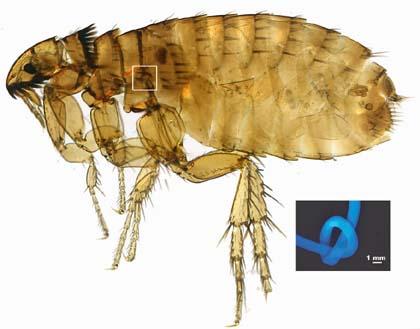From Arkakuso to the laboratory in a jump

Australian researchers have managed to produce a protein in a laboratory capable of giving large jumps to fleas. Precisely thanks to this protein, the flea retains elastic energy.
Other insects, such as flying insects, owe their resilina to the tissue that binds the wing and the body to no damage when flying. According to scientists, resiline is elastic gum, which means it does not lose any elasticity even though it stretches again and again.
To produce a synthetic siline, scientists have extracted from a Drosophila melanogaster part of the gene responsible for the production of this protein. Subsequently, E. coli has been introduced into the genome of a bacterium, which has allowed the bacterium to produce the precursor of the retina, prosiline protein.
Mixed and in the light, the pro-siline liquid silhouette with the catalyst ruthenium, just wait 20 seconds to obtain a solid material of the same characteristics as the silhouette.
Researchers are studying whether it is applicable to medicine. It seems that it can be suitable for certain implants, such as replacing the disc between the vertebrae.
The research has been published by Australian scientists in the journal Nature. In the image above we see two photographs taken by the researchers: in the largest, the position of the chair stands out in the body of the flea and in the smallest, the new material.
Buletina
Bidali zure helbide elektronikoa eta jaso asteroko buletina zure sarrera-ontzian











